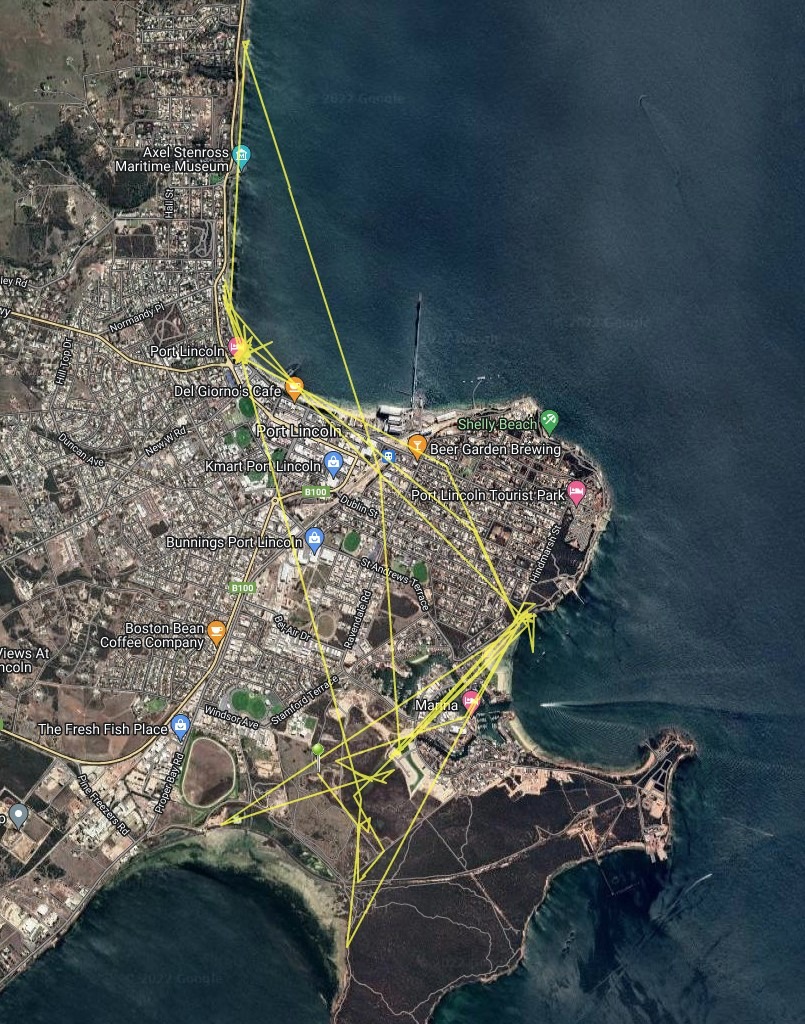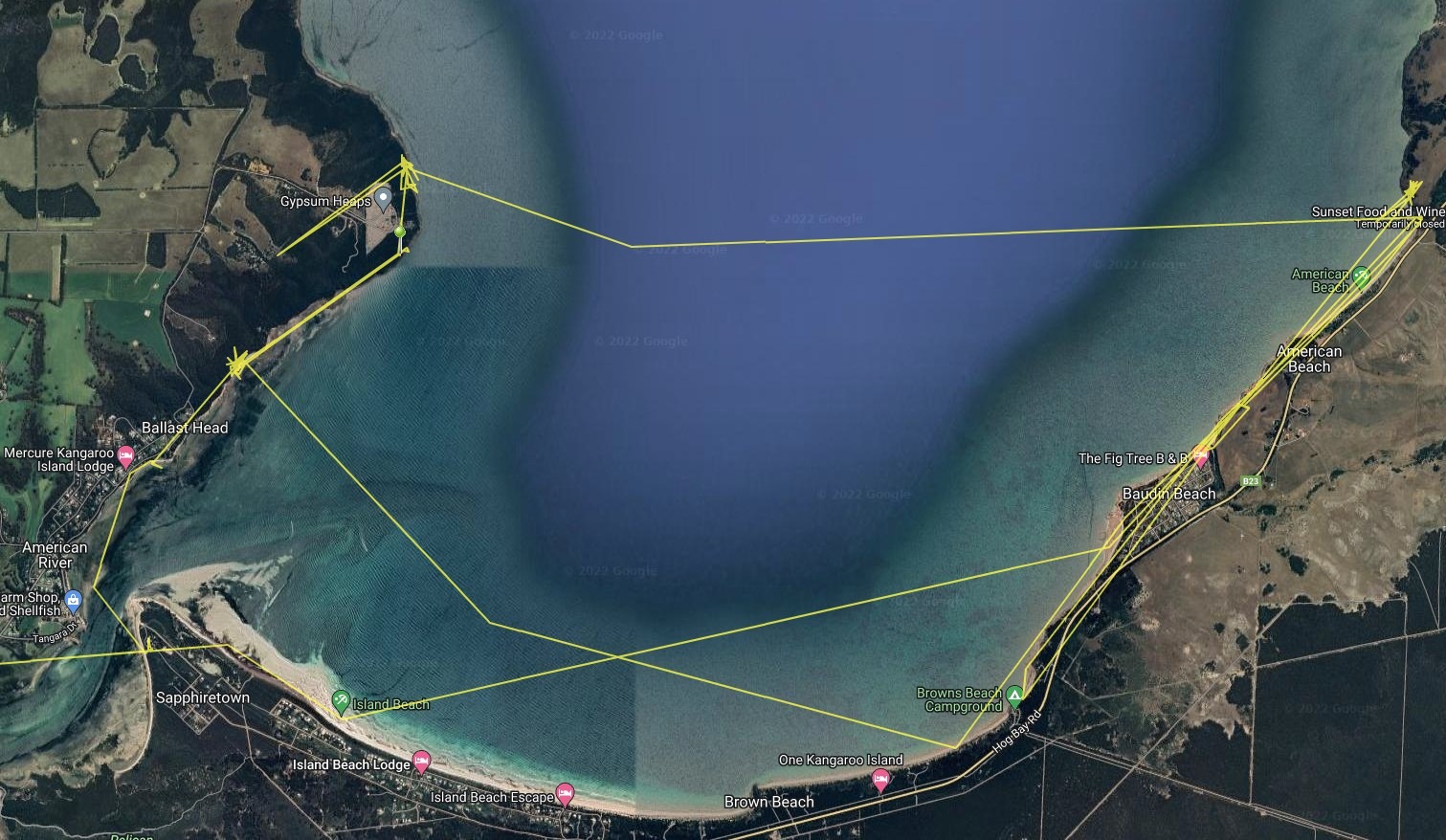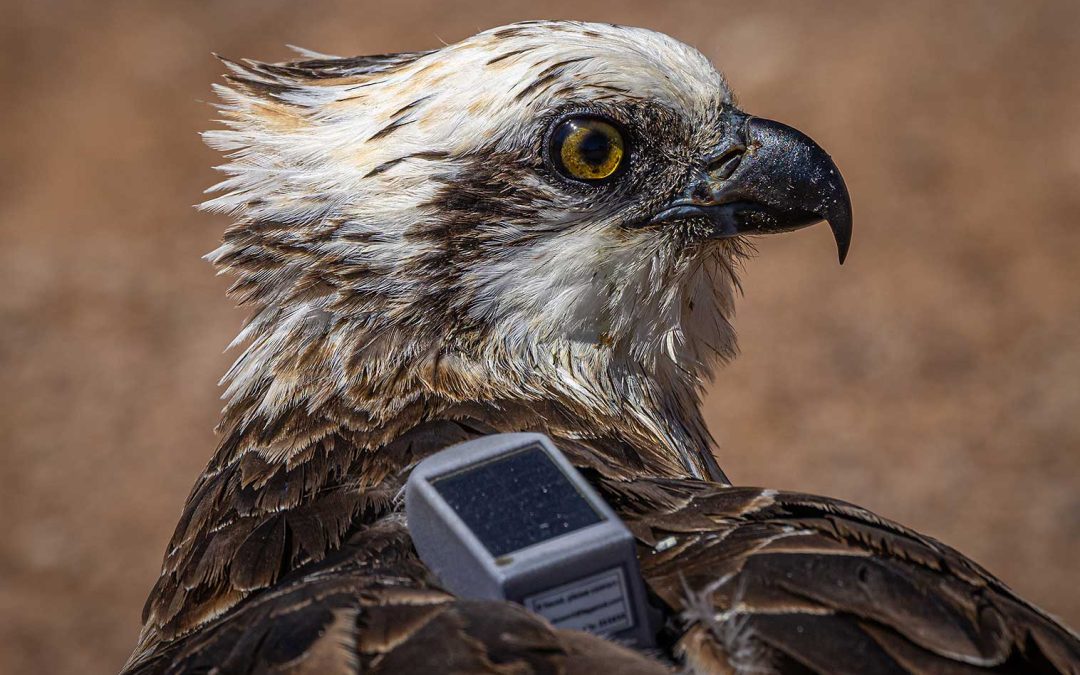Ervie – Port Lincoln Barge nest
Ervie has been on the wing (fledged) for about 44 weeks (308 days) and remains around the rural city of Port Lincoln, having barely ventured far from his nest. Whilst he appears to be independent from his parents (for food), this attachment to familiar hunting and foraging habitat gives him a considerable survival advantage. Similar behavior of a juvenile male within nesting territory has also been observed and recorded at the artificial nesting platform at Wills Creek Conservation Park near the township of Price.
The tracking data and flight statistics over the past seven days for Ervie include:
- Osprey travelled 85.4 km
- Maximum altitude was 726 metres and average altitude was 26.4 metres
- Maximum speed of 68 km/hr and average speed of 2.4 km/hr, note the very low average speed is not unusual given that Ospreys spend much of their time sitting around and still hunting from favorite perches and elevated observation structures.

Ervie’s short flights in and around the city of Port Lincoln.
Phantom – Wills Creek Conservation Park (Price township) nest
Phantom is a female Osprey which has been on the wing (fledged) for 39 weeks (273 days) and independent (16th March) from her parents for 186 days (26.5 weeks).
Phantom has settled into the American River / Pelican Lagoon estuary on Kangaroo Island for a little over six months with at least 16 preferred and consistent hunting and foraging locations identified in the vicinity of the Pelican Lagoon Conservation Park and adjacent productive wetlands.
Phantom’s survival is looking promising with significantly improved chances of reaching adulthood given the emerging patterns of habitat use.
The tracking data and flight statistics over the past seven days include:
- Osprey travelled 66 km
- Maximum altitude was 1,418 metres and average altitude was 24 metres
- Maximum speed was 80 km/hr and average speed of 1.69 km/hr
- The maximum altitude data is interesting however there were 2 very high but short flight events (Alt 1,418 metres and 985 metres) and it appears the bird may have taken advantage of the rising air thermals and lift created by the mallee vegetation and winds being directed upwards when it hits the high cliffs along the north coast on Kangaroo Island
Phantom’s short flights around Pelican Lagoon on Kangaroo Island.

Desy – Louth Bay rescued Osprey
On the 11th March the adult rescued Osprey was fitted with a Satellite Tracker and released at Louth Bay near the jetty. Louth Bay is a small township not far from the city of Port Lincoln on the Eyre Peninsula.
The last tracking data for Desy was on 22nd March and based on the last data point sent, the bird was alive at this point. A mortality symbol normally shows on the tracking database if the bird did not show movement over ten consecutive positions. As this did not happen, it was assumed the tracker simply failed to connect to the phone network which happens regularly as birds move along remote coast lines. No sightings have occurred since that time.
In August, Friends of Osprey Vice President, Ian Falkenburg, conducted a search of the last known location of Desy in order to try and form a view of what might have happened. Ian spent time scaling low cliffs and walking the coast line around Louth Bay and found numerous deep caves along the cliffs with a significant amount of fox prints inside and around cave entrances. He offers the following plausible explanation: Desy may have succumbed to sepsis from the injury to his leg and following death, scavengers including fox move in to feed on the carcase. If a fox carried the carcass into a cave, the satellite signal would be unable to connect with the network. This would explain why the transmitter showed movement after a bird is dead, (e.g. due to scavenger activity) and why the mortality symbol did not show on the tracking database. Whilst the tracking symbols are intended to help identifying that something is wrong, they are not always 100% correct. Whilst this would be an unfortunate outcome for this Osprey, injured raptors generally have a very low survival rate when returned to the wild.

